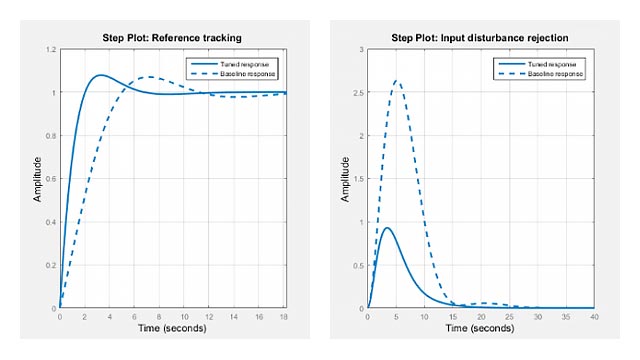Take random samples of a model with both tunable and uncertain blocks. Using uncertain blocks requires Robust Control Toolbox™. Random sampling of tunable blocks works the same way as shown in this example.
Create an uncertain model of
, whereais an uncertain parameter that varies in the interval [3,5], and
= 0.5 +/- 30%. Also, create a tunable PI controller, and form a closed-loop system from the tunable controller and uncertain system.
T is a generalized state-space model with two uncertain blocks,aandtau, and one tunable block,C. SampleTat 20 random(a,tau)pairs.
Tsis a 20-by-1 array ofgenssmodels. The tunable blockC, which is not sampled, is preserved inTs. The structuresampleshas fieldssamples.aandsamples.tauthat contain the values at which those blocks are sampled.
Groupingaandtauinto a cell array causesrsampleBlockto sample them together, as(a,tau)pairs. Sampling the blocks independently generates a higher-dimensionality arrays. For example, independently taking 10 random samples ofaand 5 samples oftaugenerates a 10-by-5 model array.
TsInd = 10x5 array of generalized continuous-time state-space models. Each model has 1 outputs, 1 inputs, 2 states, and the following blocks: C: Tunable PID controller, 1 occurrences. Type "ss(TsInd)" to see the current value, "get(TsInd)" to see all properties, and "TsInd.Blocks" to interact with the blocks.
In this array,avaries along one dimension andtauvaries along the other.

